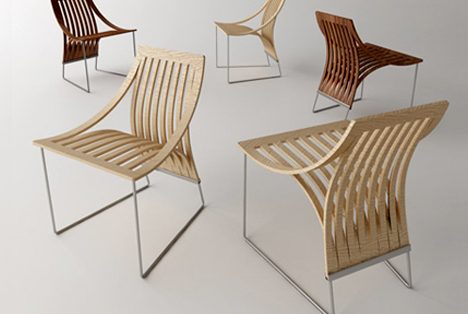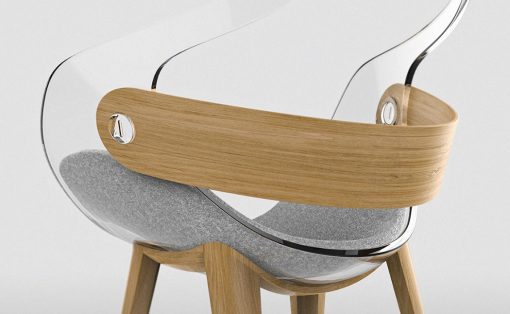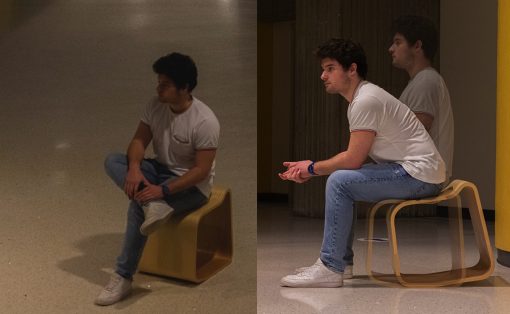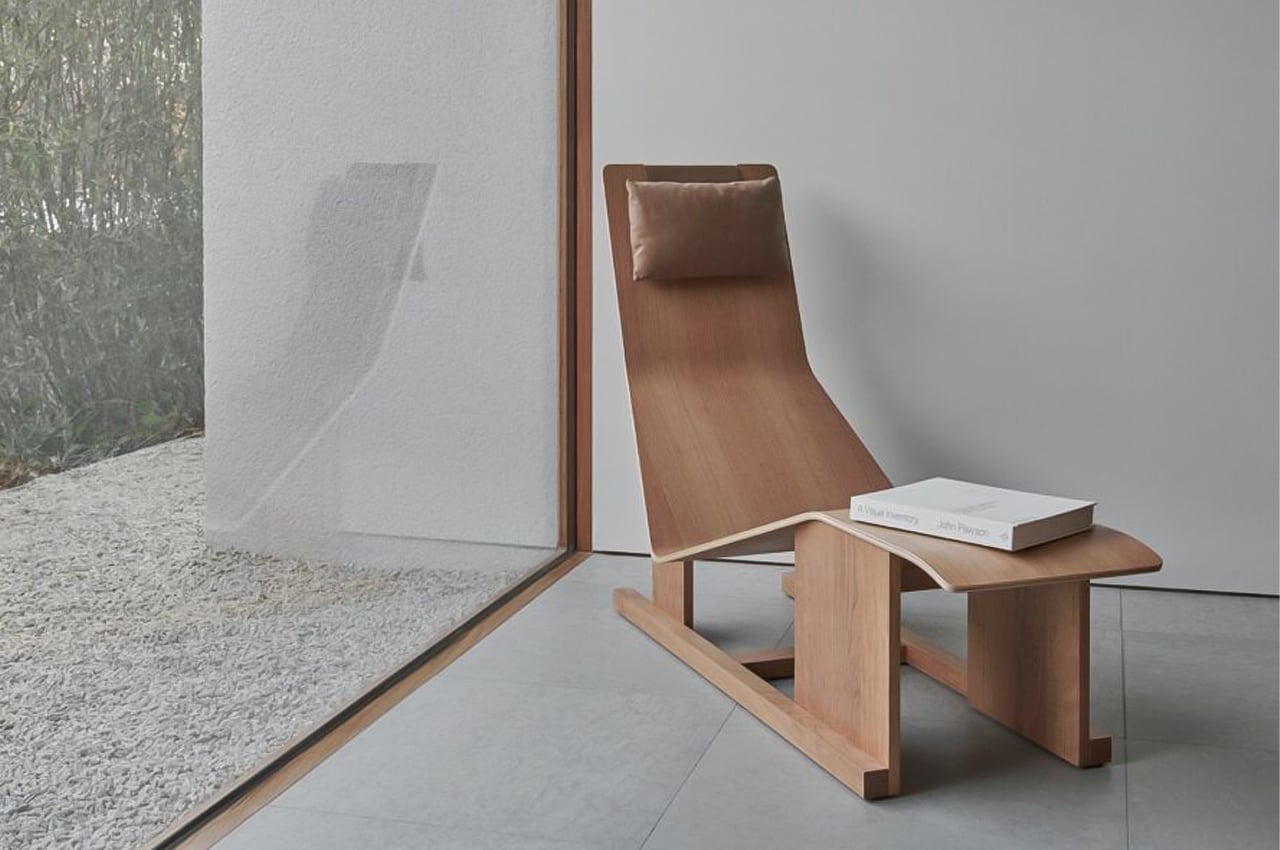
2020 was a life-altering and drastic year, and 2022 is our chance to redeem all our careless mistakes of the past and to start living more consciously and sustainably. We cannot ignore the needs of our planet anymore, we need to take the environment into consideration, and what better way to start doing that than from our own homes? Sustainable furniture is taking the design industry by storm, they’re a step towards making our homes and our daily lives more eco-friendly and sustainable. They’re an attempt to cast aside toxic materials, and instead, add furniture designs to our home that won’t rot away on Earth for years once we’re done with them. We’ve curated a collection of furniture products created from cork, bamboo, rattan, and even mycelium! The options are endless, and the end result is the same – a greener, healthier, and happier Mother Earth!
1. The 4PM Chaise Longue Chair
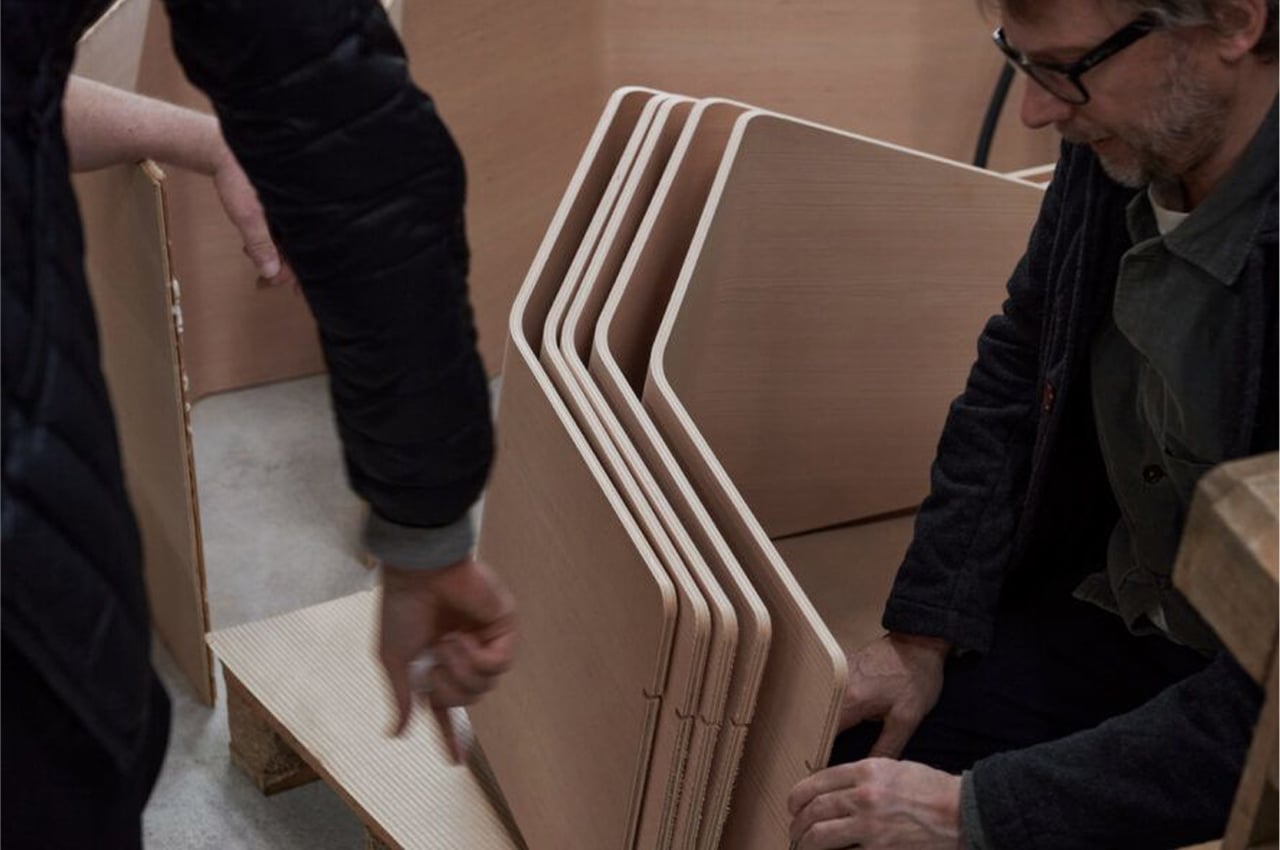
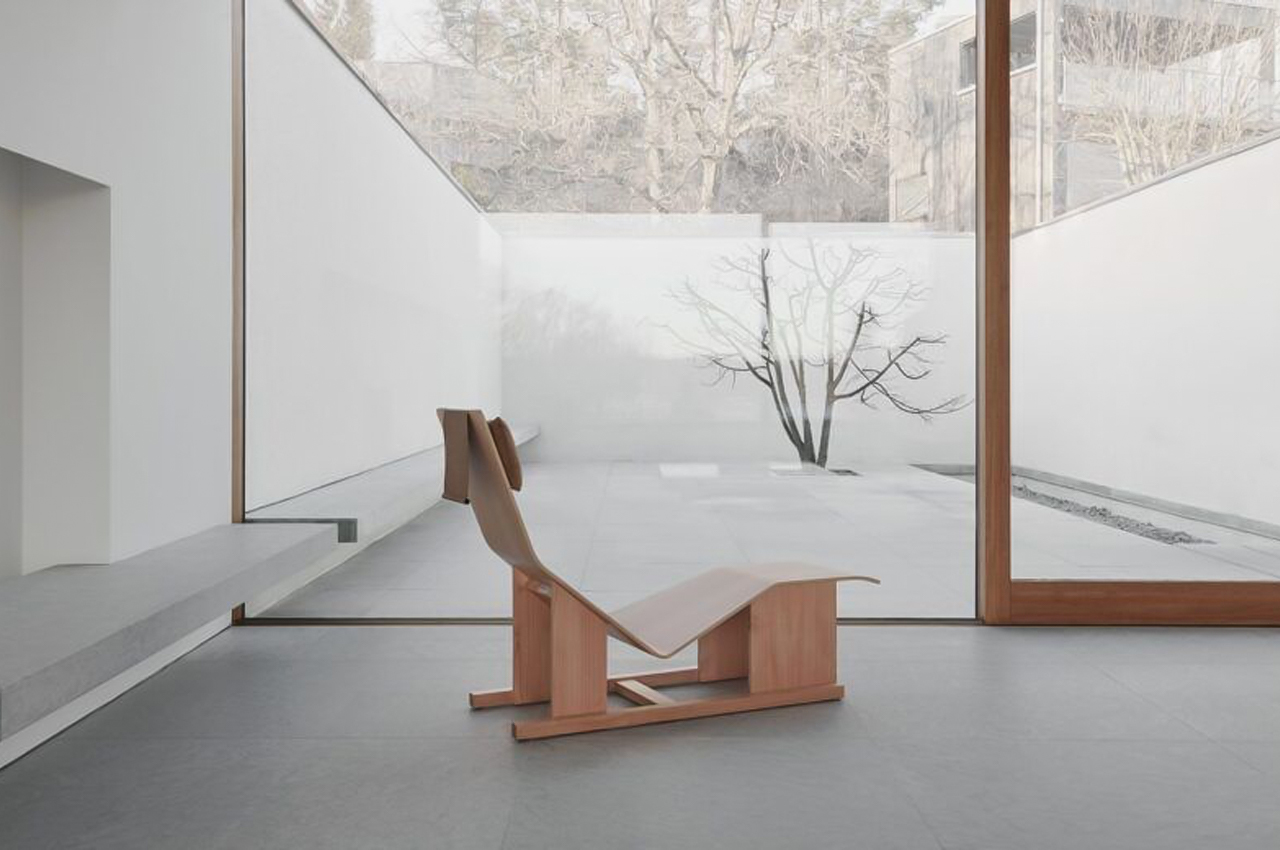
Comprised of flat and curved features, the 4PM Chaise Longue Chair is designed to create comfort out of hard material. Constructed in either Douglas fir or cherry wood, the only upholstered component of the 4PM Chaise Longue Chair is the leather headrest. Balanced on top of the backrest, Massproductions held the headrest in place with a steel weight.
Why is it noteworthy?
Massproductions is a slow furniture company, don’t let the name fool you. Since the furniture company only develops a few pieces every year, the ones that go into production guarantee a top-quality build and durable life span. Boasting an efficient, sustainable, and high-quality industrial production process, the company’s designers ensure the integrity of Massproductions’s vision. The company’s founder, Chris Martin, developed the 4PM Chaise Longue Chair to reinforce the company’s commitment to quality and produce an ergonomic, long-lasting chair for much-needed R&R.
What we like
- Sustainable production and design process
- Ergonomically designed
What we dislike
- Doesn’t seem very comfortable to sit on
- Space consuming
2. Listón
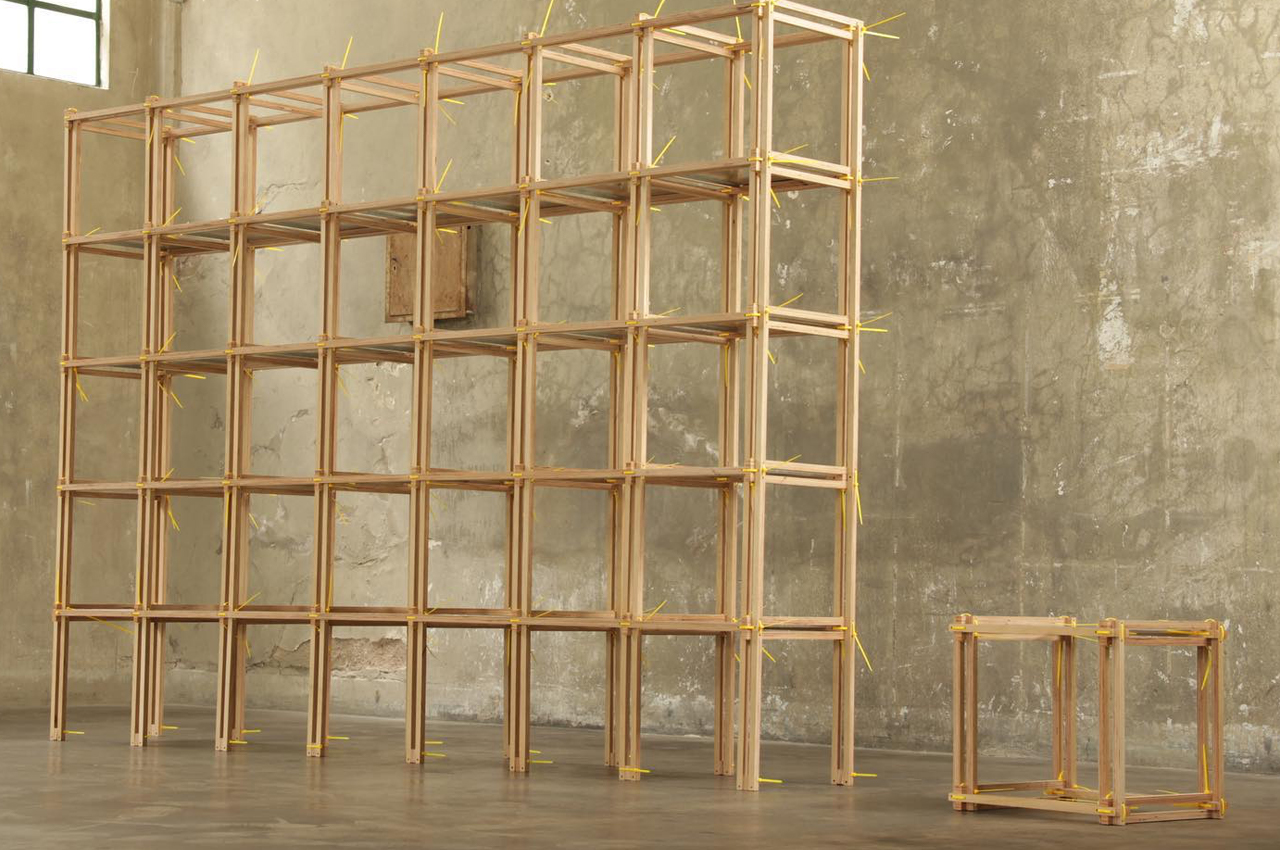
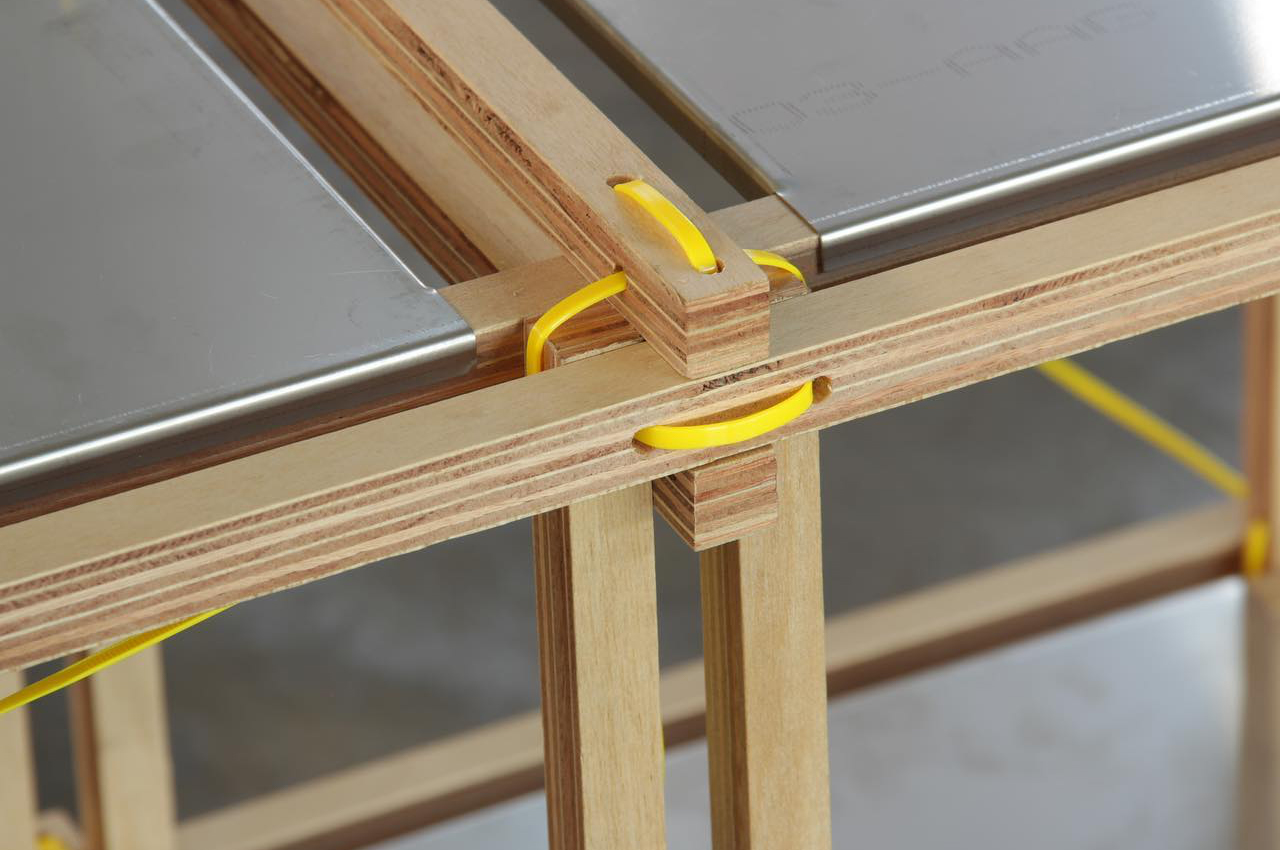
Listón is a modular shelving unit that uses a system of cable ties and wooden slats to form an endlessly re-configurable and sustainable furniture piece. The cable tie system allows users to create infinite configurations of varying sizes and shapes for essentialist shelving units that will look good in any room. Replacing hardware and tools, the cable ties systems provide secure fastening for each module that comes with Listón.
Why is it noteworthy?
With this in mind, many designers are approaching new furniture and appliance designs with sustainability being the driving force. Adding his design to the mix, architect, and designer Guille Cameron Mac Lean developed Listón, a new type of furniture system that uses cable ties and wooden slats to configure modular storage units.
What we like
- The system of cable ties and wooden slats significantly reduces the amount of packing goods needed to ship the furniture system by 18 times in comparison to other flatpack furniture
What we dislike
- The wooden slats and cable ties could break
- Not the most aesthetic furniture design to add to your living space
3. The Ermis Chair
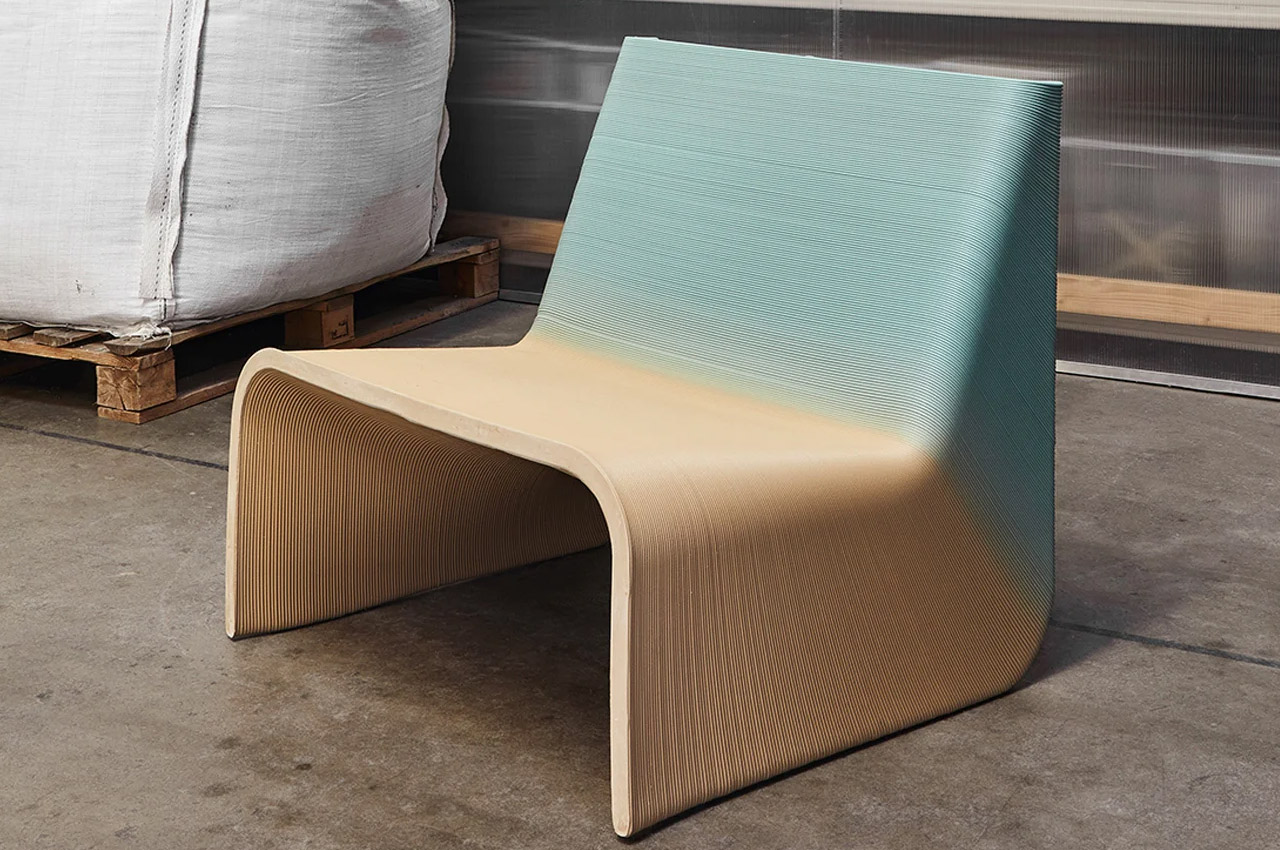
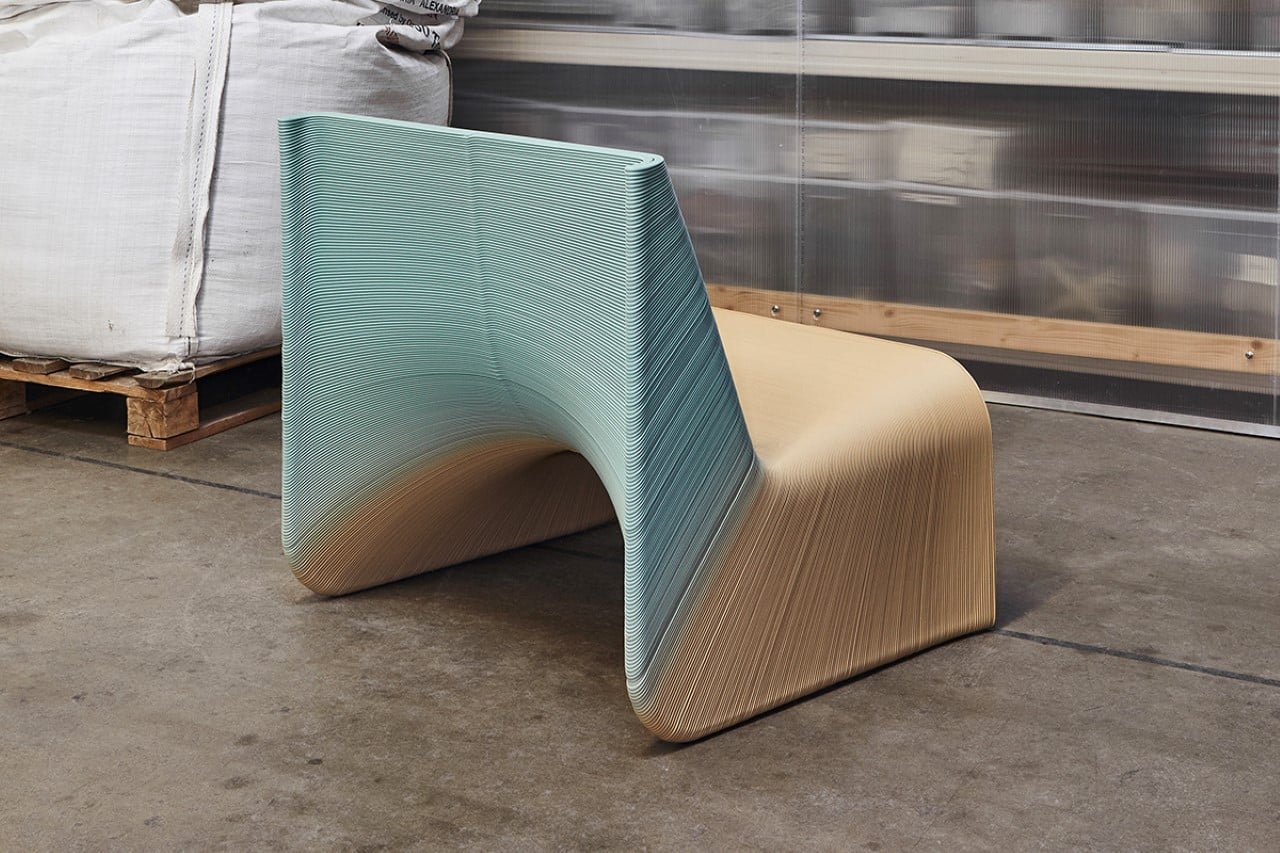
The Ermis Chair by The New Raw displays the combination of human ingenuity with robotic accuracy to turn plastic waste into robot-aided 3D printed furniture. The Ermis isn’t just a marvel of engineering and sustainability (recycled plastic, remember?), it’s also a phenomenally pretty chair. That gradient of light brown to blue has an instant beachy feel, with colors resembling the sand and the water. Look behind and you’ll see a sack filled with plastic pieces that served as the raw material for the Ermis chairs.
Why is it noteworthy?
Working with the robot and experimenting with new plastics requires constant experimentation, which then results in a lot of plastic waste. Determined to not let the waste end up in some landfills, Panos and Foteini decided to repurpose the plastic waste into furniture. The Ermis Chair is a result of that grand experiment, with its uniquely beautiful form and that absolutely gorgeous natural color gradient that comes from the extruded plastic filament gradually changing color through the print.
What we like
- Created from recycled plastic
What we dislike
- As sustainable and pretty as this chair is, we don’t know how comfortable it would be to sit on
4. Foresta System
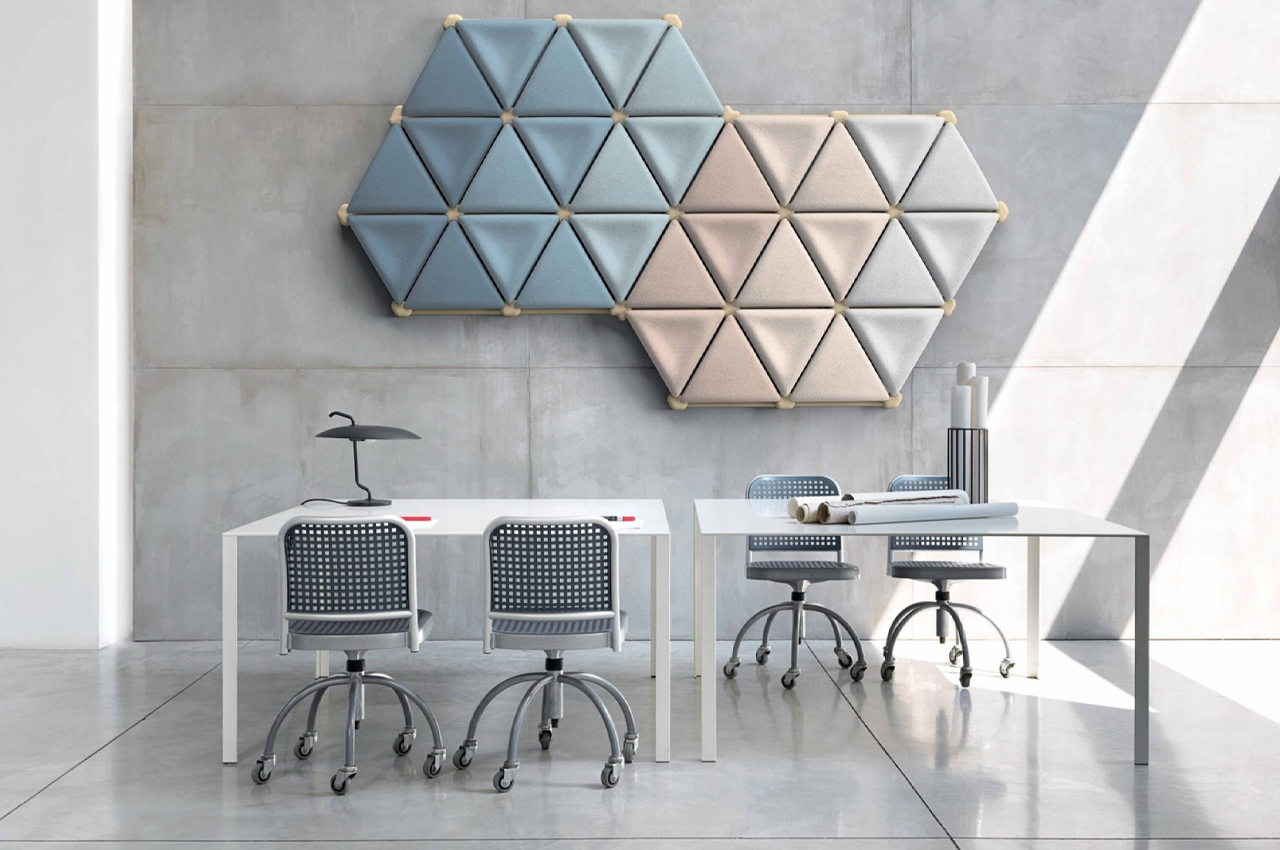
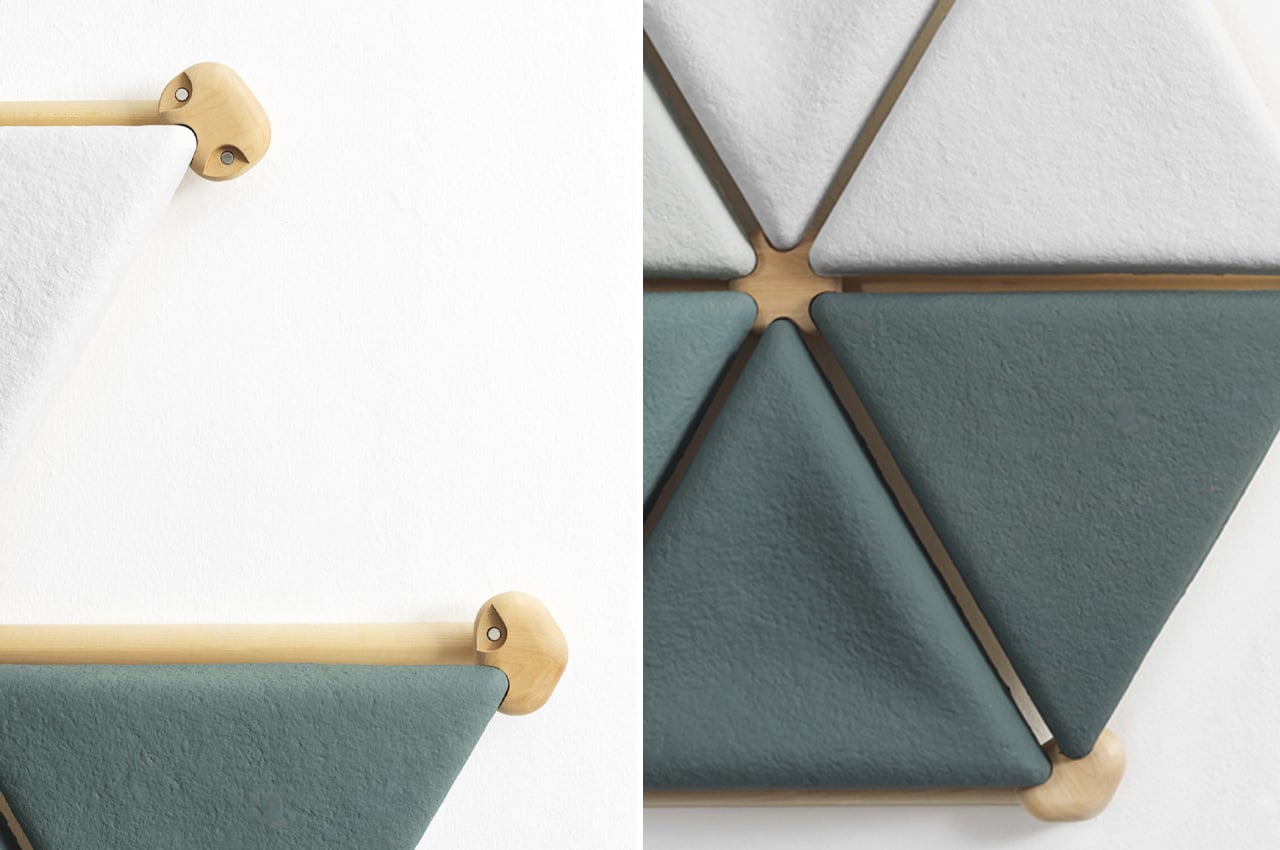
Foresta System is a modular acoustic panel design made from a unique blend of fungal mycelium and upcycled textile material. Constructed from a mix of mycelium panels, wood branches, and nodes, the timber frame that supports the different parts of Foresta can be mechanically fixed to the wall or vertical surface. Each node also carries integrated magnets that allow the acoustic panels to be mounted on the timber frame, allowing for easy removal and assembly.
Why is it noteworthy?
Packed with industrial-level strength, mycelium is a natural fungi material that has recently been used as building materials for various construction projects. From home building to furnishing needs, mycelium provides an organic, yet durable construction material. Now used to create interior acoustic panels, the Foresta System designed by Italy-based Mogu takes a unique blend of mycelium and upcycled textile materials to create modular acoustic panels.
What we like
- The innovative use of Mycelium
- Each node also carries integrated magnets that allow the acoustic panels to be mounted on the timber frame, allowing for easy removal and assembly
What we dislike
No complaints
5. Stackabl
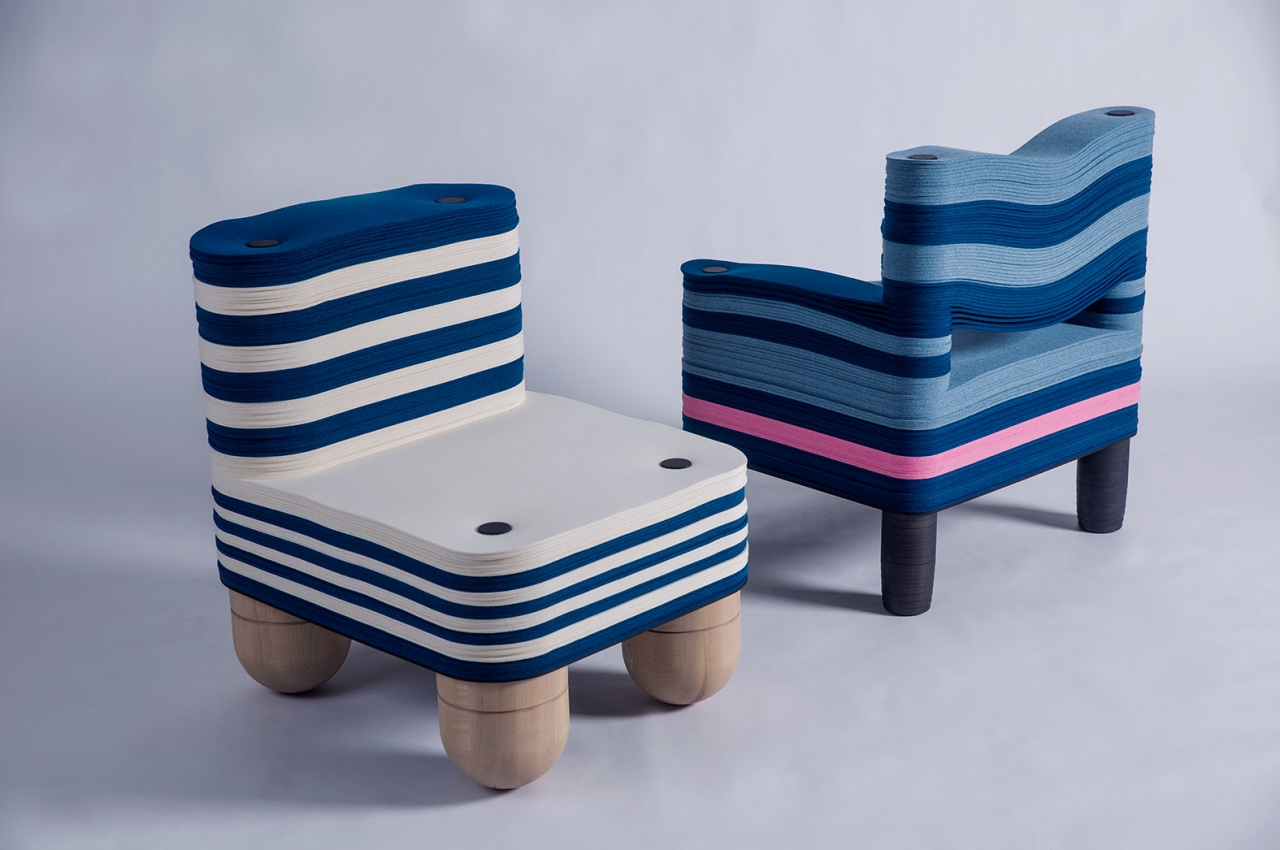
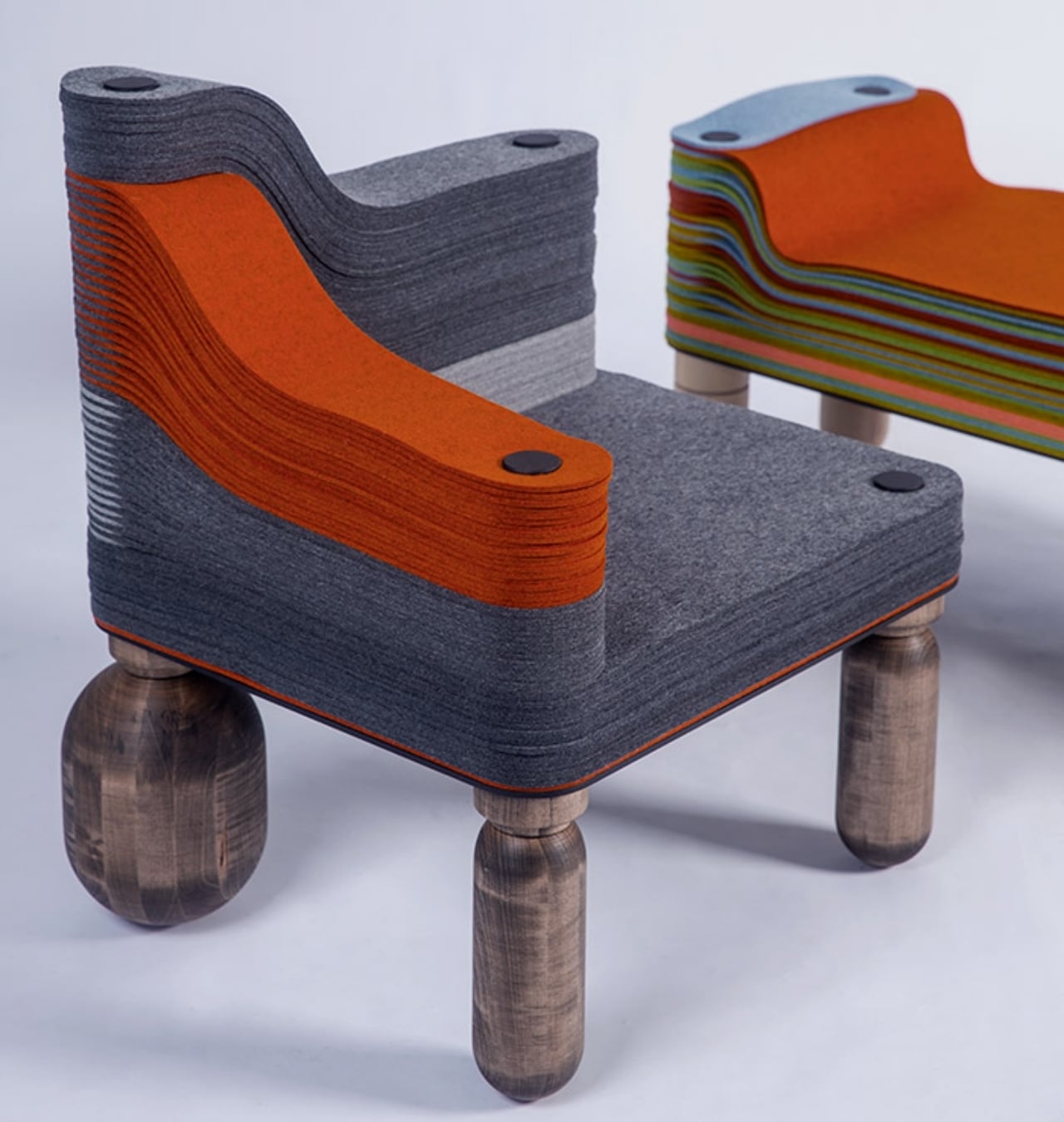
More than just a collection of designer furniture in the form of chairs, lounges, and benches, Stackabl is actually a new system that mixes machine precision with human creativity. In a nutshell, a specialized configurator software analyzes choices made by a user or a designer, like colors or dimensions, and selects high-quality felt offcuts that are then cut by robots for use in making furniture.
Why is it noteworthy?
The demand for clothing and furniture upholstery has probably gone up in the past few years, as more people become more attuned to well-designed products. That means more materials are used for production, which unfortunately also means more scraps are left on the cutting room floor, quite literally. While some of these materials are biodegradable or at least recyclable, one design firm is putting them to good use to create furniture that not only looks comfortable but artistically striking as well.
What we like
- Reduces carbon footprint while also enriching and empowering local economies
What we dislike
- May not suit modern contemporary homes
6. The TAKEoSEAT
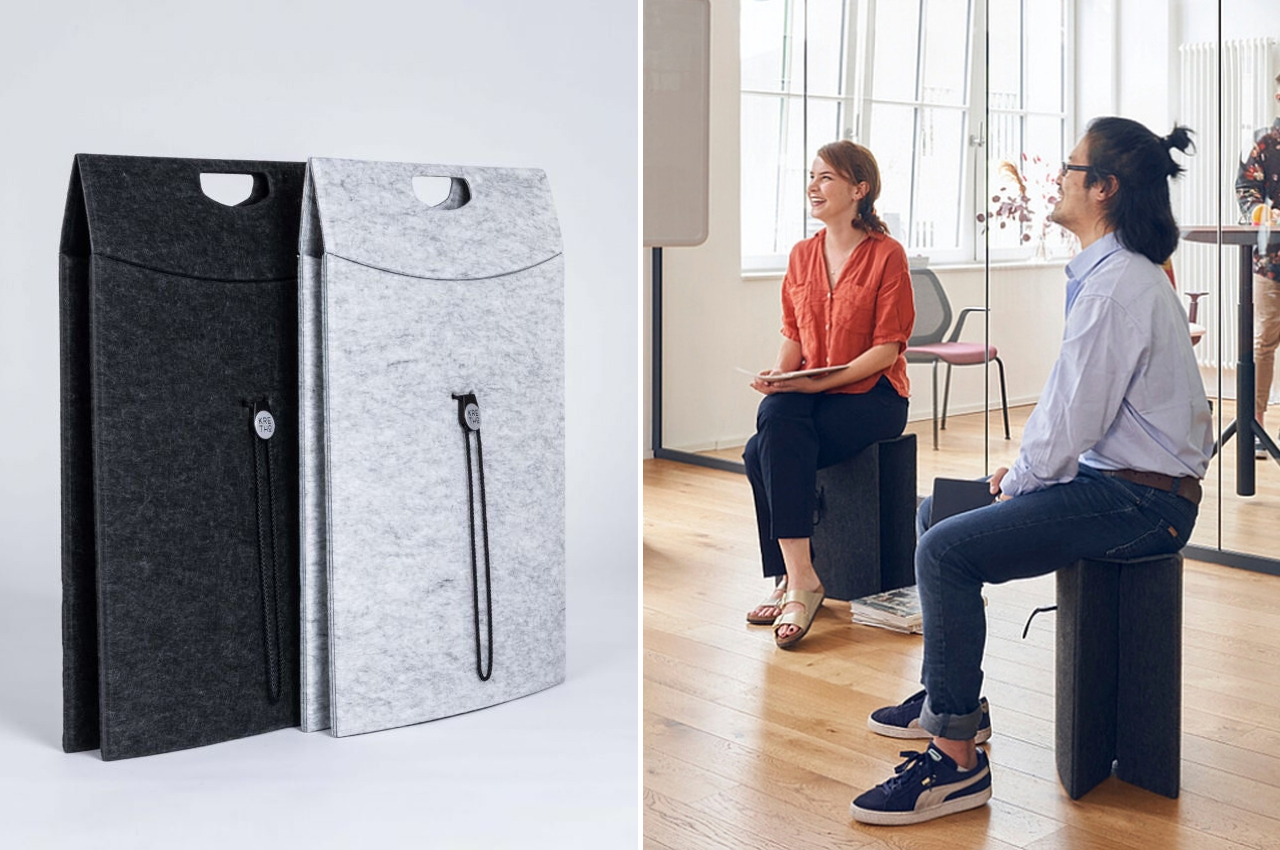
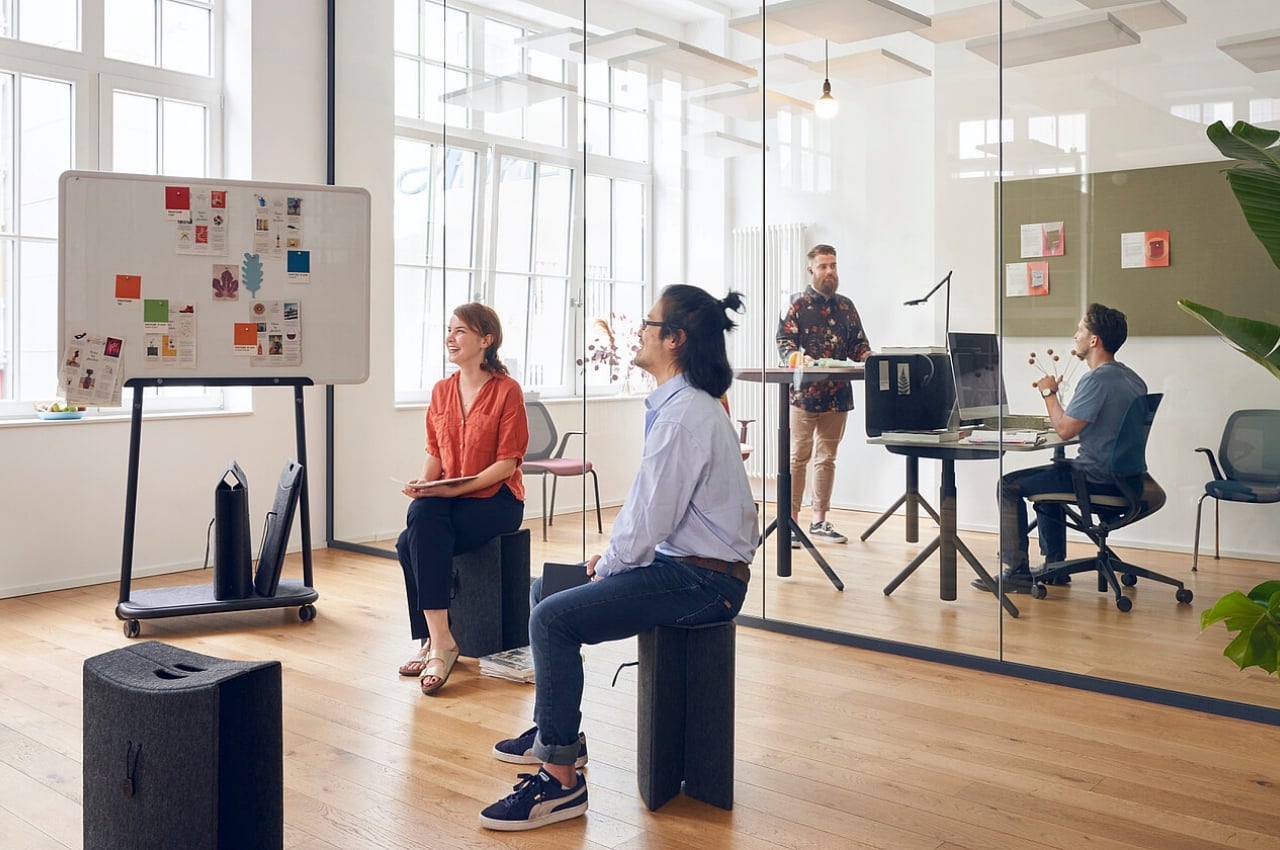
Folding stools are nothing new, but few actually try to hide the fact that people are carrying something meant to be sat on. In contrast, the TAKEoSEAT flattens down to something that looks like a large portfolio, or at least a stylish bag made of felt. You won’t look odd carrying it around, nor would the seat look out of place in an office space. Designer KRETHO positions this portable stool as a perfect part of an agile arsenal, allowing people to just pick up their seats and move around as needed. No more rearranging furniture or sweating over a heavy chair.
Why is noteworthy?
This folding design is admittedly not exactly novel, but what TAKEoSEAT adds to the table is a bit of environmental focus. Each stool is made from PET felt, which is felt that comes from those plastic bottles that we use and throw away without giving a second thought about where they end up. PET bottles undergo a special process (that does, unfortunately, use up water and energy) that results in a material that feels familiar to the touch while also strong enough to support a load of 130 kg. Plus, the TAKEoSEAT itself is recyclable, too!
What we like
- Created from PET felt
- Extremely portable
What we dislike
- Folding designs are quite common these days
7. The Stair Cubby
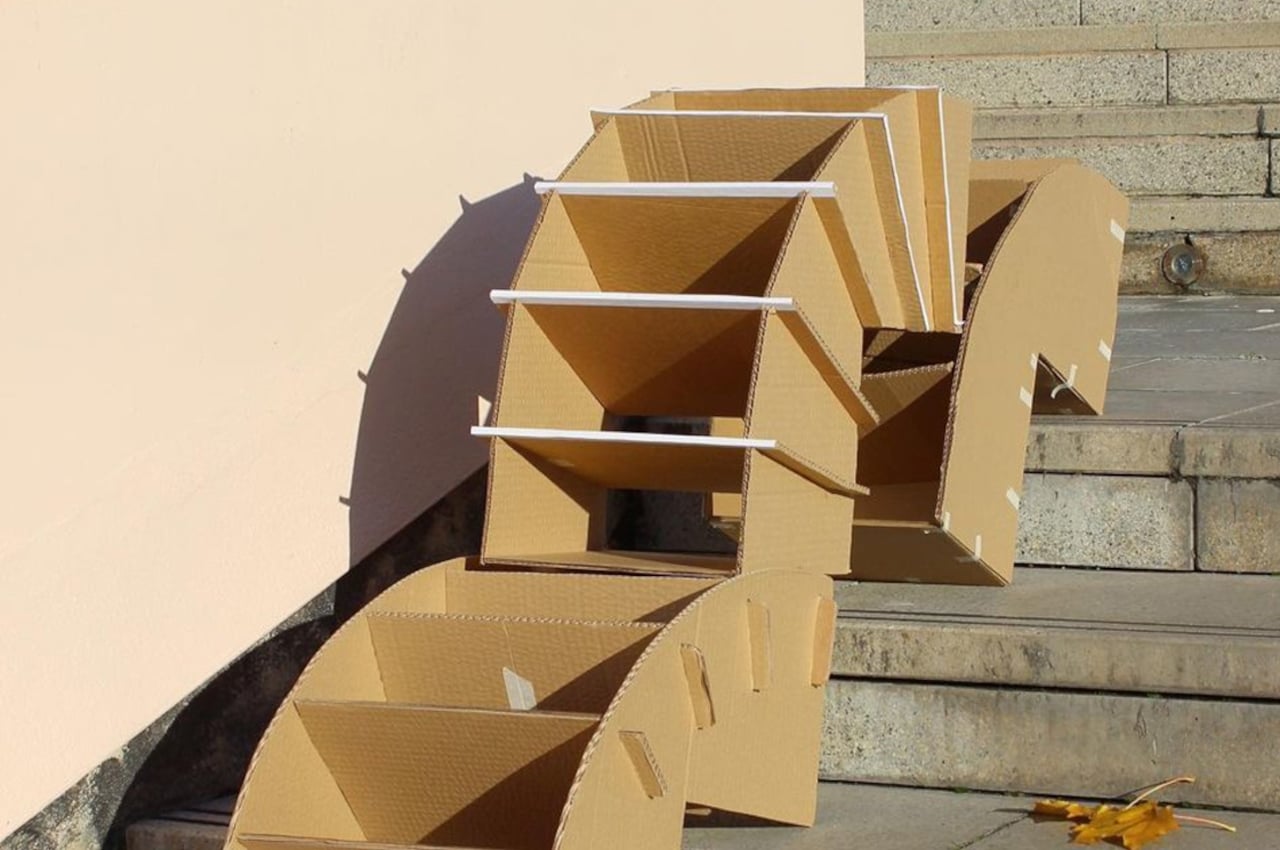
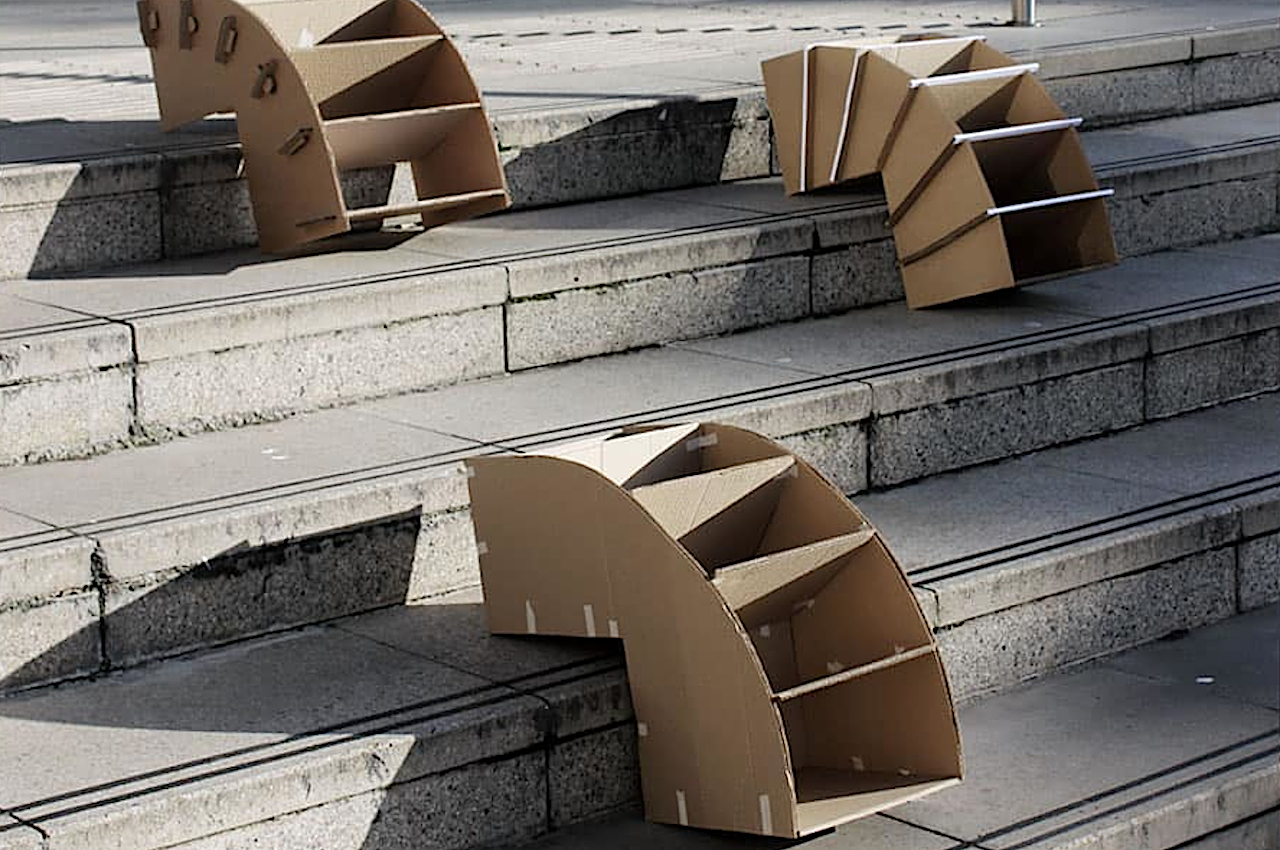
The Stair Cubby, as it was christened, can be assembled without the use of tools, with tabs simply going into slots and held down with pegs. The cubby is designed to sit on two steps of stairs, but the panel on the back can slide up and down to adjust to different stair heights. The storage has five open-access cubbies for shoes, books, and any other item that can fit inside, keeping things organized and out of harm’s way.
Why is it noteworthy?
Staircase bins need to take into account the particular shape of stairs, but not all stairs are made equal, so they have to be a bit more flexible or at least configurable. Given how in-demand these storage solutions might be, they also need to be durable and sustainable. These two product design students from Nottingham Trent University in the UK hit both birds with one sheet of plywood.
What we like
- Can be assembled without the use of tools
- Great for homes with space constraints
What we dislike
- We’re not sure how well it would hold heavier objects
8. Burnt Cork
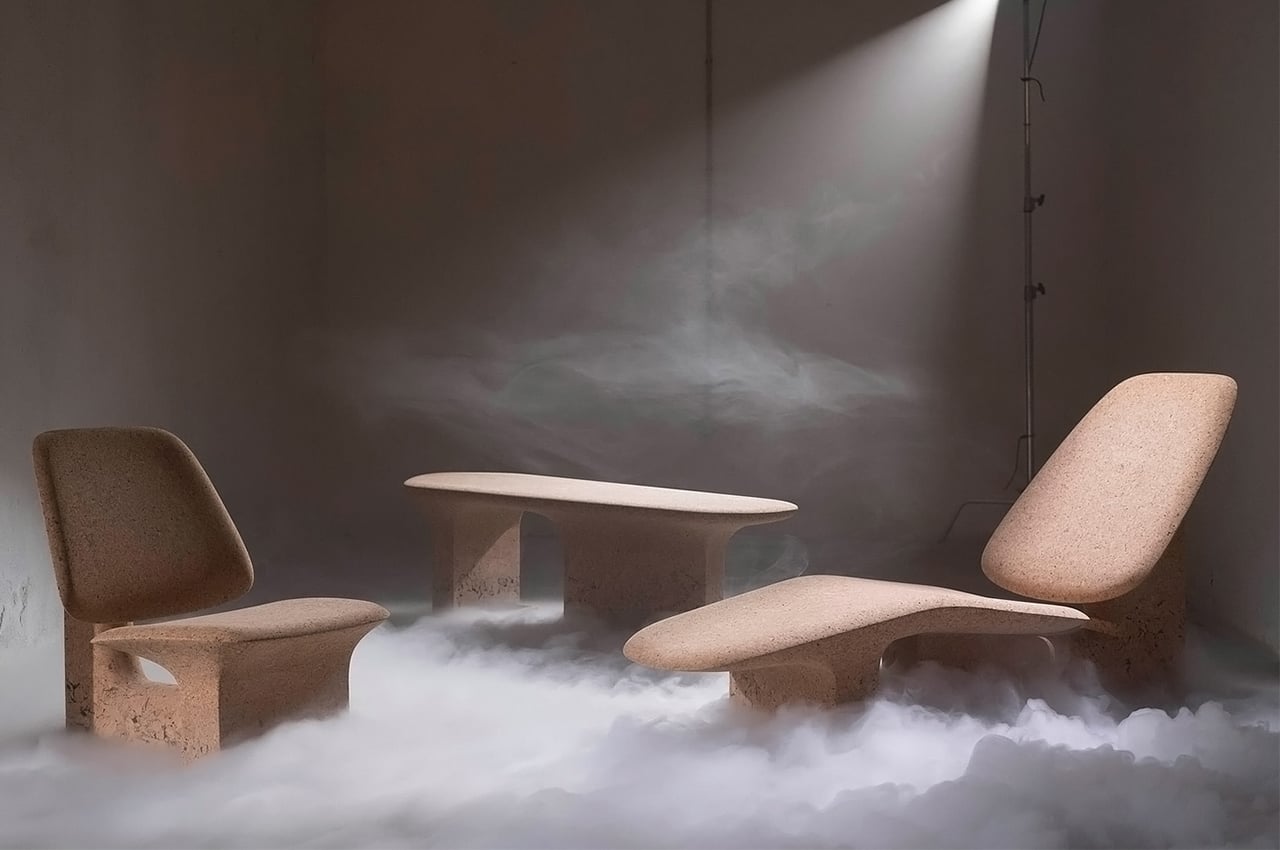
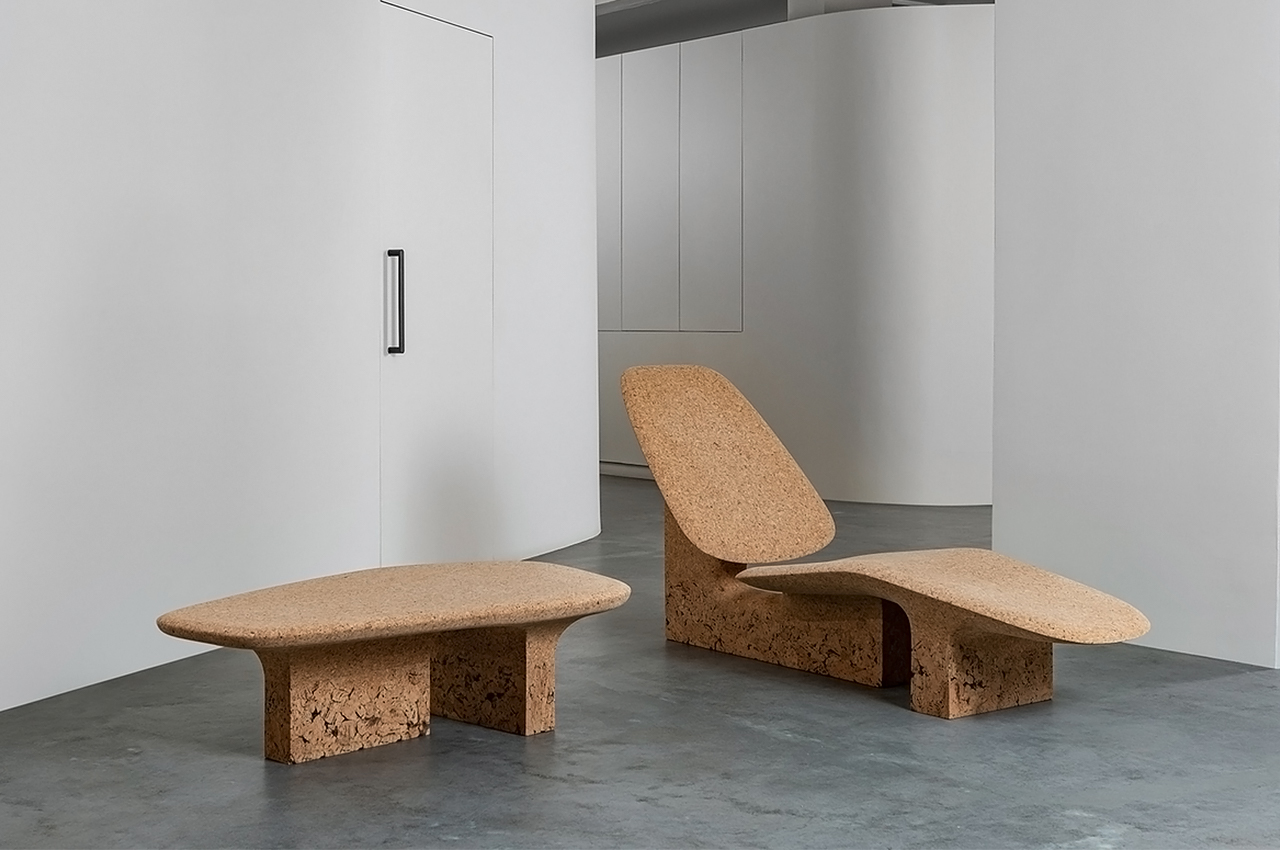
Have you ever made a bulletin board from wine bottle corks? I thought that was the most creative use of corks instead of throwing them away but obviously, I am no Noé Duchaufour-Lawrance! The French designer created a whole furniture set using burnt cork as the material and therefore the range is aptly called Burnt Cork. He uses discarded cork for the range, choosing different gradients and cork grain patterns to create a play between textures.
Why is it noteworthy?
Noé Duchaufour-Lawrance spent two years on research and development before giving second life to the waste cork. The furniture set is an homage to the resilience and beauty of this sustainable material. Burnt Cork is crafted using a blend of traditional and modern techniques resulting in organic forms with curved lines that give it a unique sculptural aesthetic. Every design highlights the dichotomy of the rough and fine cork textures.
What we like
- Cork finally gets a chance to shine through in this collection
- Every design highlights the dichotomy of the rough and fine cork textures
What we dislike
No complaints!
9. Rattan Stool
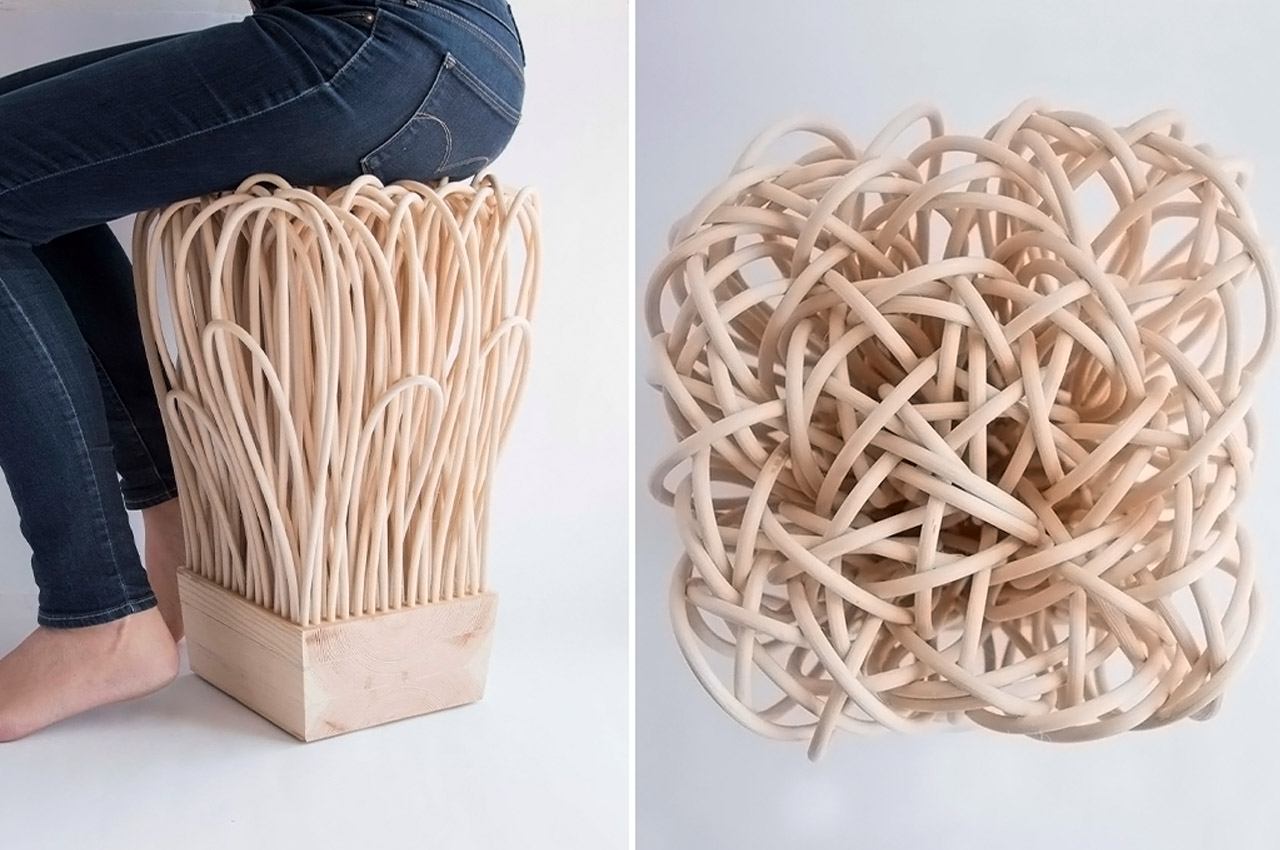
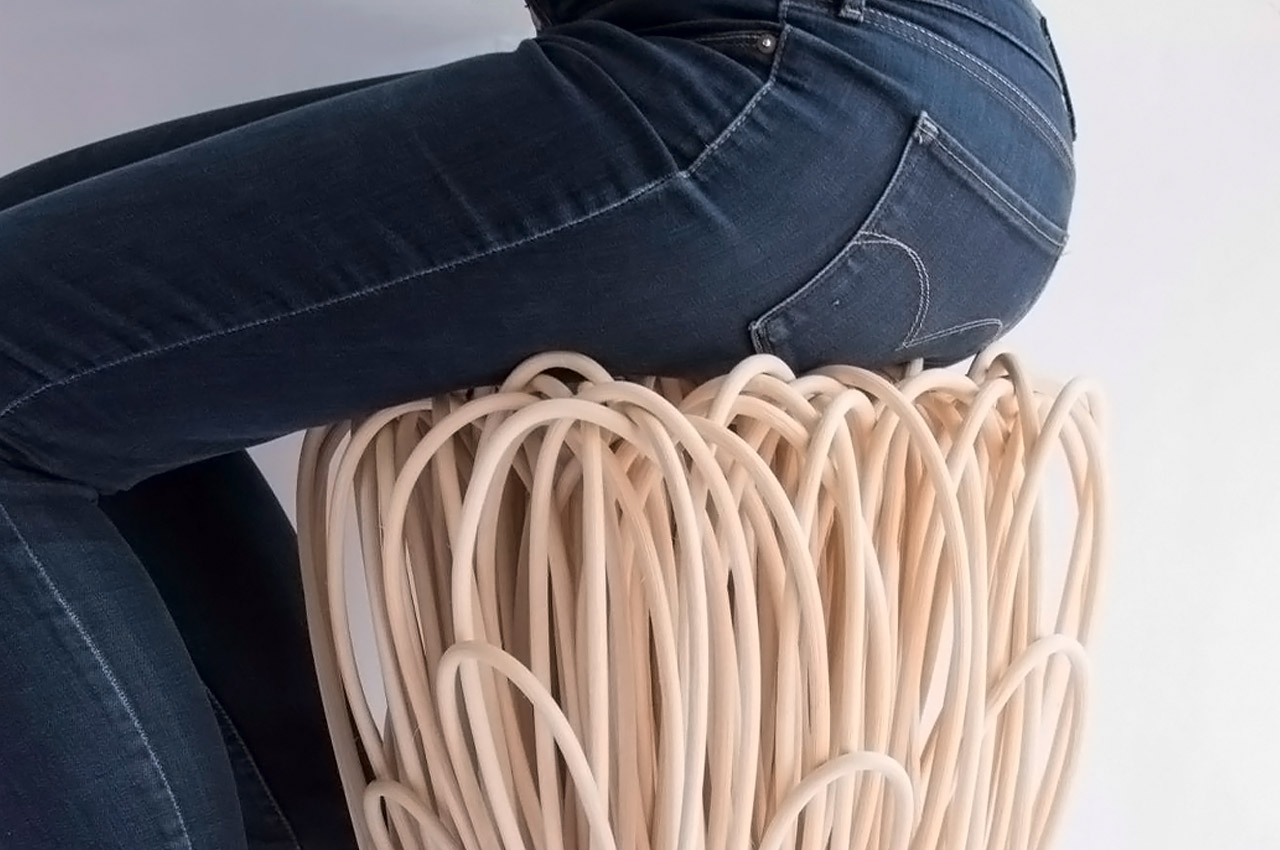
First impressions really quickly – did you think this was a whisk or folded spaghetti? I thought spaghetti but maybe I am just hungry. This rattan stool stood out to me because of its visually curiosity-evoking design. Is it comfortable? Probably. Is it cool? Absolutely.
Why is it noteworthy?
This stool explores the malleability of rattan as a material in furniture design, we are so used to seeing it in a checkered woven form that the noodle-like seating of this piece becomes a testament to how we can use often overlooked materials unconventionally to push boundaries. As the world moves towards a sustainable future, so must design.
What we like
- Innovative use of Rattan
- Quirky spaghetti-inspired aesthetics
What we dislike
- It may not be comfortable to sit on for long periods of time
10. Kibardin’s cardboard furniture
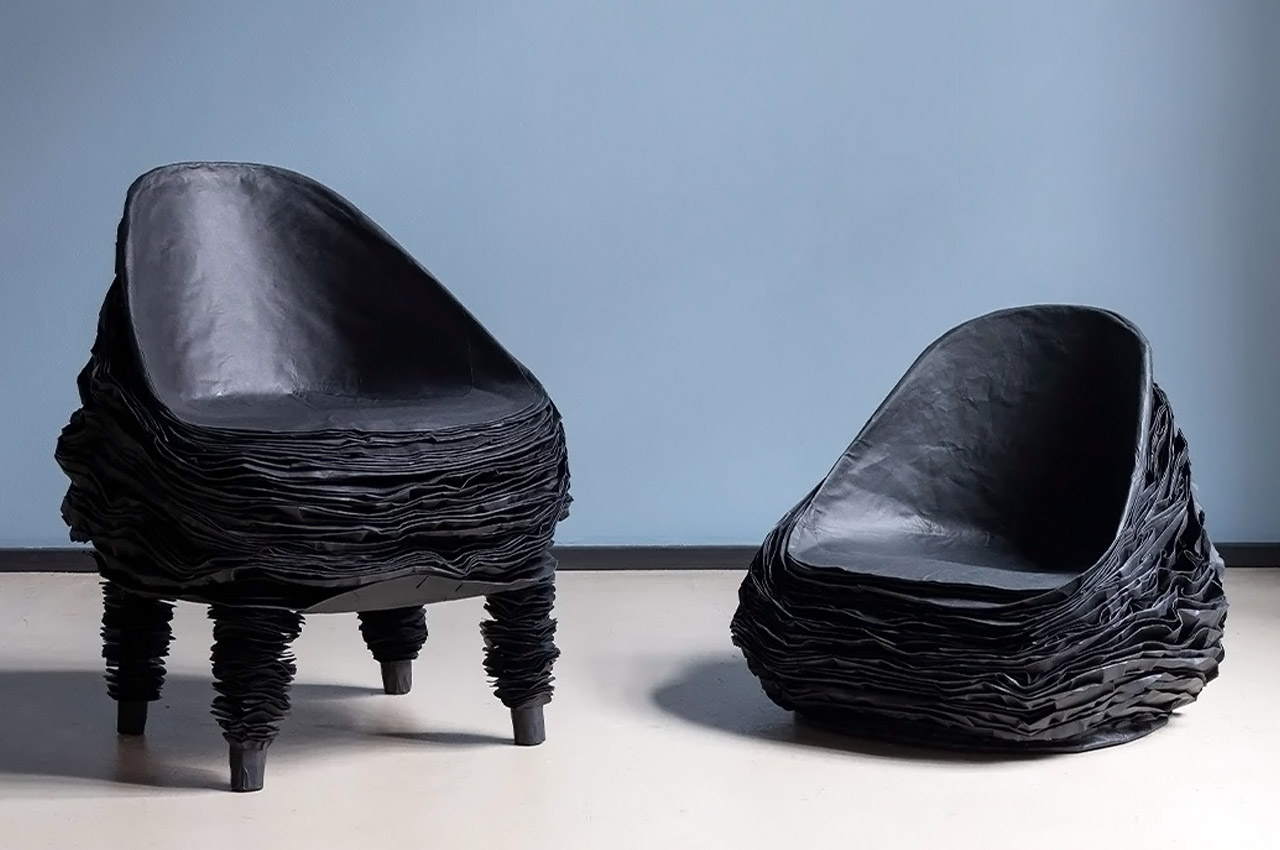
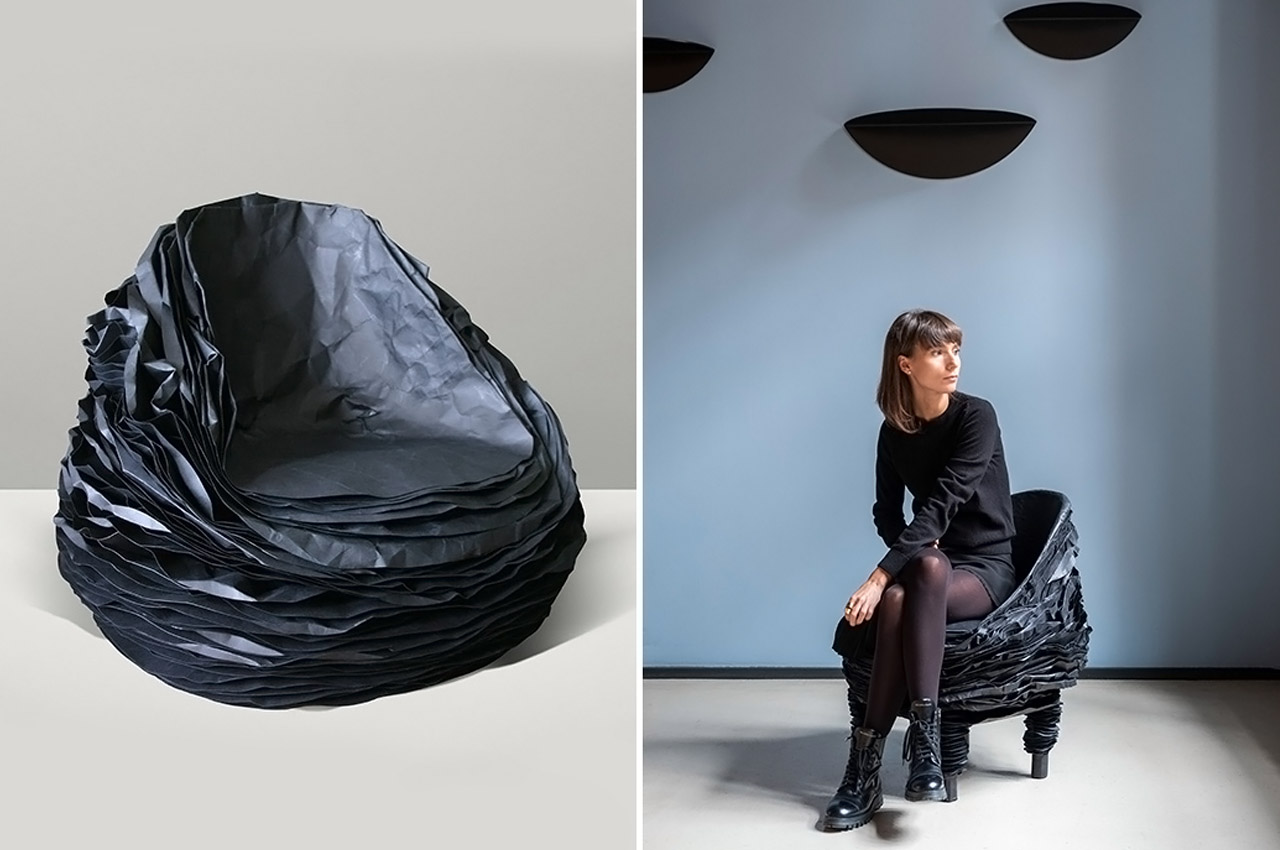
Every piece of furniture that Kibardin makes is one of a kind, there is no mold and he shapes them all himself. We are now moving towards a sustainable lifestyle but Kibardin has been doing this for over 25 years – he has successfully recycled 2000 pounds of cardboard which is equivalent to saving 17 trees. To put it into perspective, 17 trees absorb 250 pounds of carbon dioxide each year and we need to ramp up the materials we use in design so that they serve a functional purpose while also contributing to slowing down the climate crisis. Using sustainable construction materials like paper and turning it into furniture that is stylish, modern, and eco-conscious is the future of long-lasting interior design.
Why is it noteworthy?
Usually, sustainable furniture is all bamboo and cork, and the earthy tones may not fit everyone’s taste but this paper furniture certainly provides an upscale alternative. Earning praise from renowned global creators including Japanese industrial designer, Naoto Fukasawa, Kibardin’s work shows that you can use a ‘weaker’ material like paper to build a sturdy table or a durable accent chair. He has a Black collection and Totem collection along with many commissioned pieces that are housed in galleries, museums, or homes of art collectors.
What we like
- Cardboard is an upscale alternative compared to bamboo and cork
What we dislike
- Bulky design



